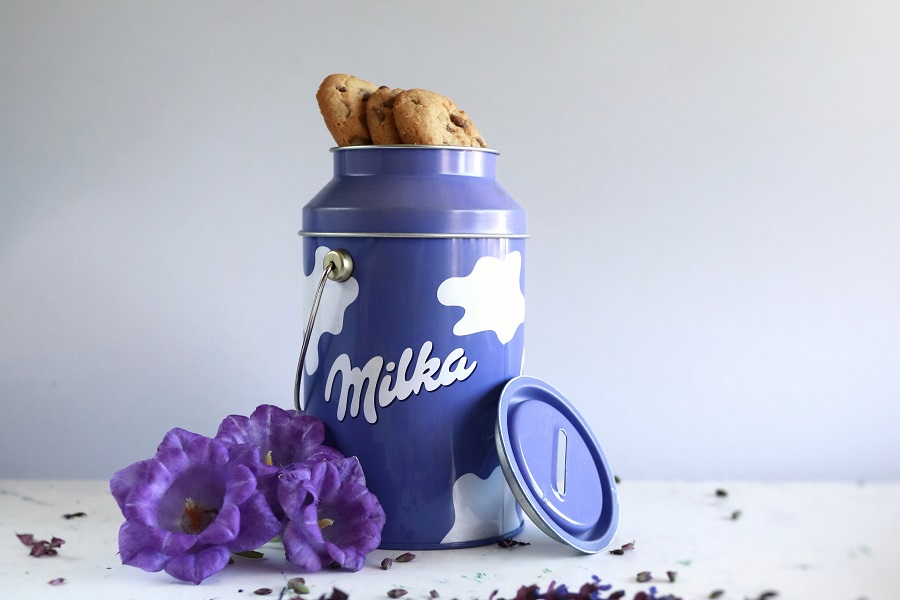FACTS
The claimant is owner of an international trademark designating Hungary and a European Union trademark for the purple colour mark (“Milka purple”) registered in class 30 for chocolate. The trademark has been used on the trademark owner’s Milka chocolate products. The defendant used also purple package for dragee products.
The plaintiff sued the defendant for infringement stating that the defendant had been using a shade of lilac colour which is confusingly similar to the color mark, in relation with similar goods.
The Metropolitan Tribunal condemned the defendant for trademark infringement. The Tribunal stated that the so-called “Milka-lilac” colour is strongly distinctive. The average consumer does not realise a slight difference between shades of colours. Relevant is the length of time of trade and for what goods the lilac colour has been used and how the consumers recognize it. In the relevant case the use of the lilac colour infringes the indication of origin function of the claimant’s mark. The circumstance alone that the defendant used different terms (its own name and logo) on the packages is not enough for the delimitation of the two kinds of goods.
The defendant filed an appeal with the Metropolitan Court of Appeal, but this was rejected. The Court stated that in contrary to the request of the defendant, it was not necessary to provide an official expert opinion in respect of the likelihood of confusion, as in result of general practical experience, the courts are able to judge the questions of confusion. As a result, it was irrelevant that the defendant filed a private expert opinion which stated that the defendant’s lilac color was not of the same Pantone code.
Regarding the shade of the colour of a package of chocolates, the average consumer is not very attentive, it is characteristic that he chooses the good that he bought earlier, about which he has a favourable opinion. In the consumer’s memory there is an unclear image of the brand. Therefore, it is the general impression of the goods which is decisive in respect of the likelihood of confusion. Consequently, it must be examined whether there are further elements that result in a delimitation of the competitors’ goods. The Hungarian consumers have been aware for a long time that lilac-colour package of the chocolate is that of the claimant’s, therefore it cannot be excluded that when one meets the defendant’s goods, he believes that those are the goods of the plaintiff. The name and logo on the package of defendant’s goods are not able to counterbalance said impression.
The applicant requested the revision of the final judgement with the Supreme Court, but this was also rejected. The caselaw considers the situation as confusion that the later mark can be associated in the mind of the consumers with the prior mark. As a result, the appreciation of the confusability is not a question of proof but a question of law enforcement. In the present case the courts of first instance were right stating similarity of the colours used by the parties. Moreover, they were right stating that the lilac colour used by Milka has been present on the Hungarian market for more than fifty years and has established the consumers’ association to this colour. Consequently, the “Bonbonetti” logo does not ensure a delimitation. Moreover, the consumers may suppose that they see a new product of the Milka trademark family. The courts of both the 1st and 2nd instance concluded properly that the function of origin of the claimant’s mark had been injured (Pfv.IV.20.260/2019).
COMMENTS
Trade signs have been used since the Antiquity. These are words or devices. Their trademark protection exists only from the 19th century.
The use of colours and sounds for individualising goods started a hundred years later and their protection by trademark law is relatively new.
Speaking only on colours the trademark protection is not without problems. The number of colours is limited in contrary to words or letter combinations. Though the Pantone code grants the possibility of demarcation, shades of colours are not able to exclude consumers’ deception as the courts have stated in the present case.
The legal consequence is that for the shade of a colour legal protection, i.e., an exclusive right cannot be granted.
Moreover, a colour cannot be protected ab initio, it is necessary that the public associates it with a product or with the origin of the product. This was the situation in the hereabove reported case, the Supreme Court used the term “Milka lilac”.
It is obvious that such situations are not frequent. As a result, one can say that the possibility of trademark protection for colours is potential but is very limited.
The author would like to express his thanks to Dr. Adrienn Sályi, Attorney at Law at SBGK Attorneys at Law and Patent Attorneys, for her kindness in making the judgement of the Supreme Court available.
In-house Counsel
Doctor of the Hungarian Academy of Sciences
Partner







